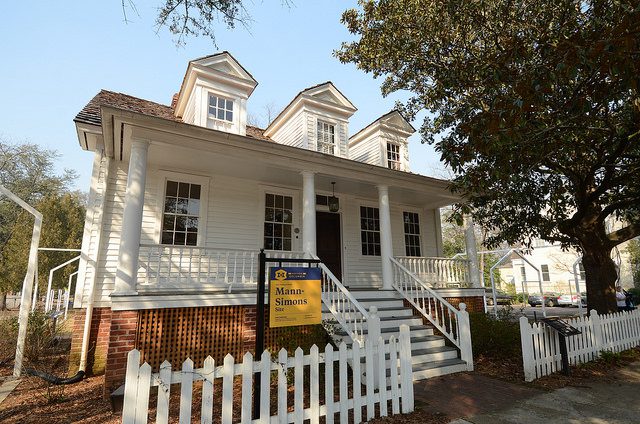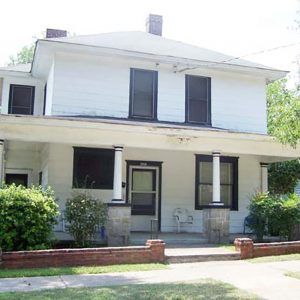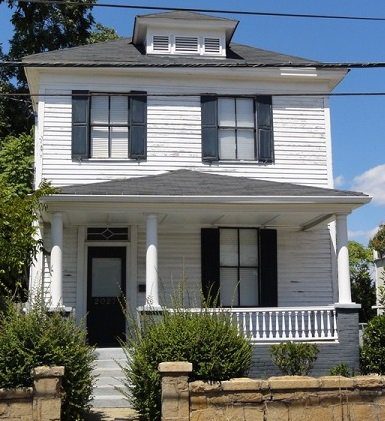
Love history and travel? We are here to help with a fun list of historic sites to visit. With some help from The Green Book of South Carolina, we have curatedA�5 African American Historic Sites to See. A�
The Green Book of South CarolinaA�is the first mobile travel guide to African American cultural sites across South Carolina. Created by the S.C. African American Heritage Commission, it provides residents and visitors from around the world a user-friendly guide to discovering and celebrating enriching cultural experiences across the state of South Carolina.
Take a look at this list ofA�African American Historic Sites and get your spring travel plans ready! Be sure to share your vacation images with us on social media on #blacksouthernbelle
5 African American Historic Sites from the Green Book of South Carolina

Mann-Simons Site: Formerly enslaved Charlestonians, Celia Mann, a midwife, and Ben Delane, a boatman, became the first generation of family members to live on the property and laid a social and material foundation that allowed successive generations to pursue a variety of businesses and social undertakings.
Although only one house stands today, the Mann-Simons Site was a collection of commercial and domestic spaces owned and operated by the same African-American family from at least 1843 until 1970. The property and its multiple buildings changed considerably over time to better accommodate the needs, tastes, and aspirations of this remarkable family. In 1970, through eminent domain, the Columbia Housing Authority acquired the site, leading to a grassroots preservation movement that saved the main house, which opened as a museum in 1978.
The Visanka-Starks House is owned by Catherine Fleming Bruce:

This house, built after 1900, was originally a two-story frame residence with a projecting bay and wraparound porch. A fire in 1989 destroyed the second story. Barrett Visanska (1849-1932), a jeweler, bought the house in 1913. In 1938 Dr. John J. Starks, the first black president of Benedict College, bought the house and lived here from 1938 until his death. Starks was president of Seneca Institute 1899-1912, Morris College 1912-1930, and Benedict College 1930-1944. After World War II this house served as the nursesa�� home for Good Samaritan-Waverly Hospital, created by merger in 1939. It was later a private residence again.
 Bertha Lee Strickland Cultural Museum is the only exhibit museum in Oconee County that underscores the rich, colorful, turbulent history of the local African American community. As stated in its motto, a�?Honoring the Past a�� Elevating the Future,a�? the museum incorporates technology and tradition to create a meaningful and educational experience for all ages. Rotating exhibits 2-4 times annually, BLSCM showcases ordinary people of the past and present whose stories and achievements will impact generations. The museum is open Tuesday-Saturday, 11am-4pm. Admission is FREE.
Bertha Lee Strickland Cultural Museum is the only exhibit museum in Oconee County that underscores the rich, colorful, turbulent history of the local African American community. As stated in its motto, a�?Honoring the Past a�� Elevating the Future,a�? the museum incorporates technology and tradition to create a meaningful and educational experience for all ages. Rotating exhibits 2-4 times annually, BLSCM showcases ordinary people of the past and present whose stories and achievements will impact generations. The museum is open Tuesday-Saturday, 11am-4pm. Admission is FREE.
 The Harriet M. Cornwell Tourist House in Columbia was listed in the National Register as part of the Multiple Property Submission a�?Segregation in Columbia.a�? From c. 1940 to c. 1960 during the era of segregation, the Harriet M. Cornwell Tourist Home served as a place where African Americans could find lodging and one meal a day. While no sign advertised the house as a tourist home for blacks, the house and its address were advertised nationally in publications titled, The Negro Travelersa�� Green Book and the International Travelersa�� Green Book.
The Harriet M. Cornwell Tourist House in Columbia was listed in the National Register as part of the Multiple Property Submission a�?Segregation in Columbia.a�? From c. 1940 to c. 1960 during the era of segregation, the Harriet M. Cornwell Tourist Home served as a place where African Americans could find lodging and one meal a day. While no sign advertised the house as a tourist home for blacks, the house and its address were advertised nationally in publications titled, The Negro Travelersa�� Green Book and the International Travelersa�� Green Book.
 Dr. Matilda A. Evans, a black physician, public health and civil rights advocate, lived here from 1928 to 1935. A graduate of the Schofield School in Aiken and Oberlin College, Evans received her M.D. from the Womana��s Medical College of Pennsylvania in 1897. She moved to Columbia and founded the first black hospital in the city in 1901, in a house at Taylor Street and Two Notch Road. Taylor Lane Hospital & Training School for Nurses burned in 1914. Evans soon opened St. Lukea��s Hospital & Training School for Nurses, which closed in 1918.
Dr. Matilda A. Evans, a black physician, public health and civil rights advocate, lived here from 1928 to 1935. A graduate of the Schofield School in Aiken and Oberlin College, Evans received her M.D. from the Womana��s Medical College of Pennsylvania in 1897. She moved to Columbia and founded the first black hospital in the city in 1901, in a house at Taylor Street and Two Notch Road. Taylor Lane Hospital & Training School for Nurses burned in 1914. Evans soon opened St. Lukea��s Hospital & Training School for Nurses, which closed in 1918.

The Modjeska Monteith Simkins House, built between 1890 and 1895, is one-story Columbia Cottage and home to Modjeska Monteith Simkins, considered the matriarch of South Carolinaa��s Civil and Human Rights movement. Simkins was a founder of the S.C. Conference of the NAACP. As the secretary of the conference, Simkins hosted many meetings and planning sessions at her home forlocal and national civil rights leaders and NAACP lawyers, including Thurgood Marshall during the Brown v. Board of Education trial. Today, the site is operated as a house museum by Historic Columbia. The house is only available for private guided tours for groups of 10 or more with advance registration. To schedule a group tour, call (803) 252-1770 x 23 or email reservations@historiccolumbia.

